Section II - Performance Tests, Synthetic
In this section of testing we cover the synthetics. These are tests that run a scripted sequence of internal APIs or that use another installed application to perform a series of scripted events. They are great in that they can provide reproducible results across various platforms. On the down side, synthetic tests can be fooled with driver tweaks and optimizations. In some cases it is necessary to rename the .exe file to something generic to discover if this is the case. In any event when this is needed (when a test shows a drastic difference in performance over the renamed exe) we will note this and show both results for comparison.
PCMark7 -
PCMark7 is the latest general performance test from FutureMark. As each generation of this benchmark has evolved and developed we have watched them add more and more realistic tests to this suite. With this generation we find more media tests, (audio and video transcoding) moving of large files, multiple web page rendering, and much more (the even added DX10 gaming). We use the Overall Performance and Common Usage suites in our testing.
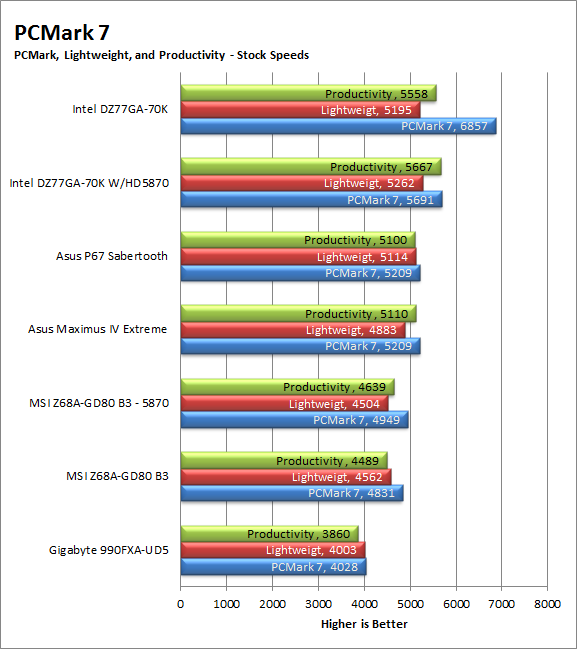
No surprises here, as you have probably already read our Core i7 3770K review you will know that the PCMark7 scores are very high due to the new AVX (Advanced Vector Extensions) in Ivy Bridge. These help to push the creativity (content creation) and Compute scores through the roof. For stock speeds we had a 23085 Compute while this jumped to 31825 at 4.8GHz using just the 3770K. When we had the HD5870 in play the numbers dropped but were still higher than any other board we have in our test group.
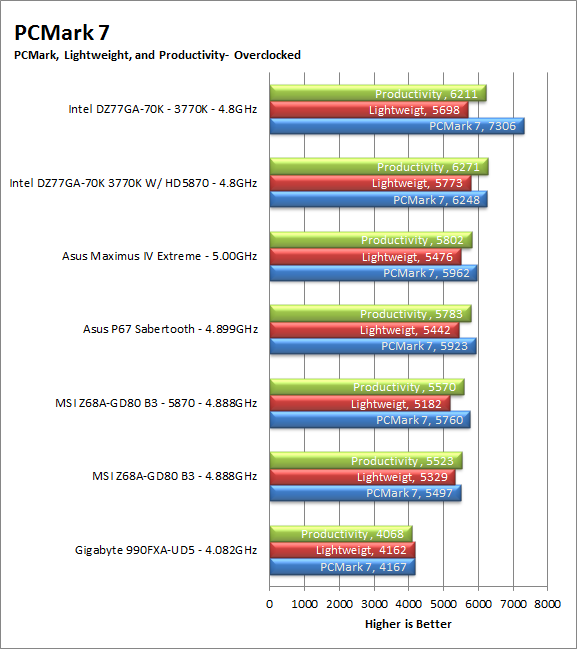
3DMark 11 -
3DMark 11 is the other Futuremark test that we run on our motherboards. This test simulates the typical tasks that a GPU (and system) would have to perform to provide you with a good gaming experience. It is based on the DX9, DX10 and DX11 engines but can only be installed on Windows Vista or later. The suite of tests covers DX9, DX10, and of course DX11 rendering; it also covers AI computations and physics. That’s right I said Physics the latest version of 3DMark uses a Havok physics engine. This removes the advantage that nVidia had with 3DMark Vantage.
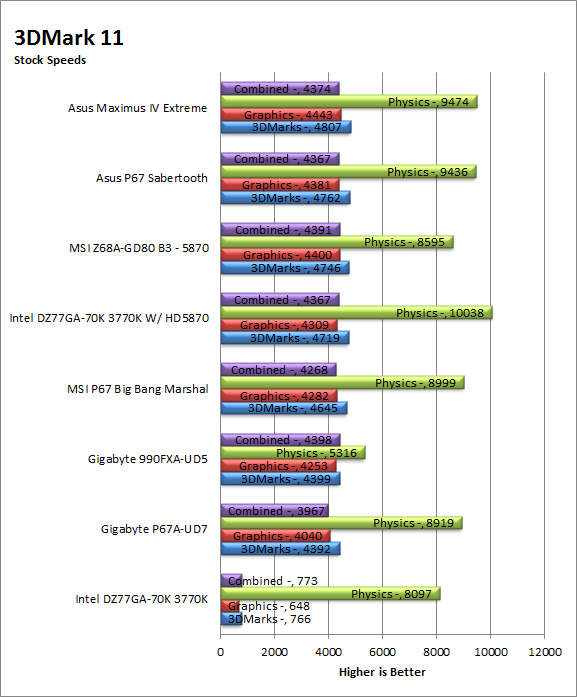
For 3DMark 11 we are finally able to use the IGP on an Intel CPU. The GMA 4000 supports DX11, but while you have support for the API you will want to remember that it is not meant for high-end gaming like Trinity or AMD’s APUs. It will get you by with mainstream gaming and a couple of more demanding games, but as you can see here it is not a powerhouse (nor was it designed to be). Still once you put in a discrete GPU things level back out.
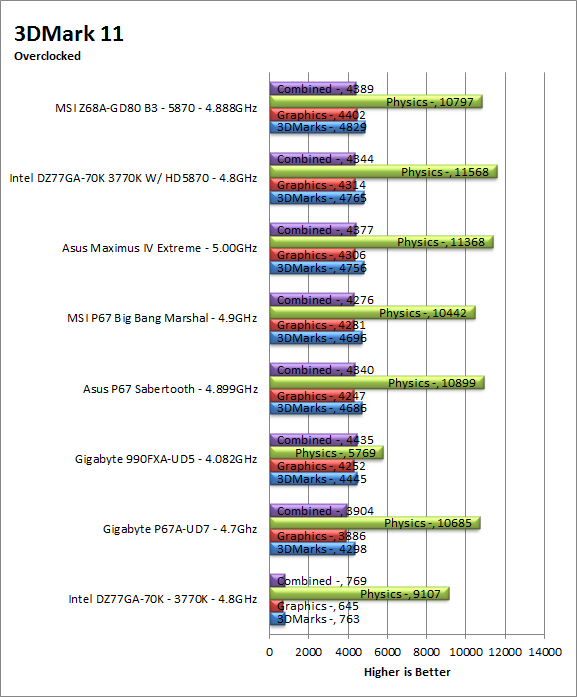
HyperPi 0.99b -
HyperPi is a front end application that allows you to easily run multiple instances of the SuperPi application. SuperPi, for those that are not familiar with it, is an application that measures the time it takes to calculate the number Pi out to as many as 32 million places. This calculation is then checked and run multiple times (up to 24 for a 32M run). This test stresses the CPU, Memory and HDD as data is handed off between the three. If there is a weak link, HyperPi will show it. For our testing we run the 32M test on as many cores (and threads) as the CPU has available. The slowest CPU time is then recorded.

Here we find out that the lower memory bandwidth that we saw it not a concern at all. You are getting some great times here. This performance is due to improvements in the way the CPU handles complex computations and also to the caching system. We would love to see what would happen if you still had 20-21MB/s of memory bandwidth available.
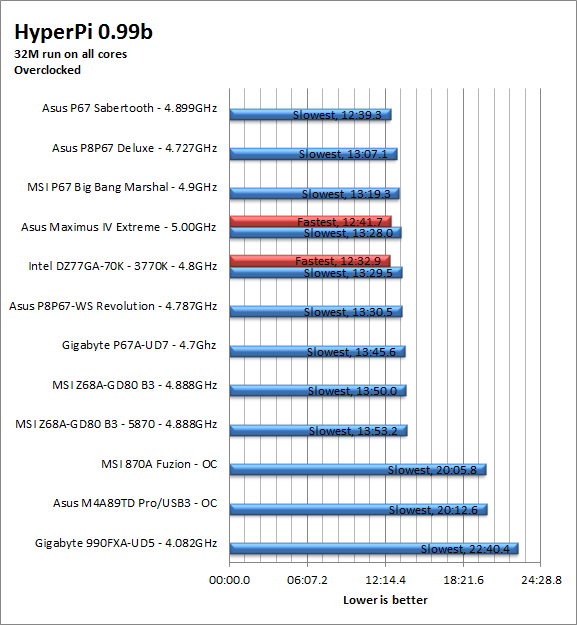
Cinebench R11.5 -
Cinebench R11.5 is the 11th release of Maxon’s rendering test. This test is based off of the Cinema 4D engine, which is one of the industry standard tools for digital animation. It is a powerful product with many different modules that can be “plugged” into it to increase its effectiveness. With Cinebench you get to see how your computer would do using this application. There are two tests; one tests the CPU’s ability to render an image across multiple cores or threads. The other tests your systems ability to handle OpenGL based rendering.
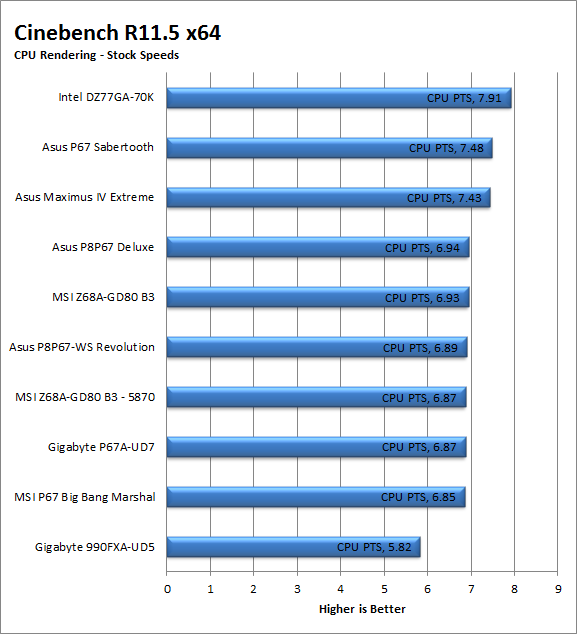
We have broken out our Cinebench scores now. This is to give you a clearer picture of the CPU and Open GL rendering from the systems in use. For CPU based rendering we found that the Intel DZ77GA-70K when combined with the Core i7 3770K does a great job at stock speed, but does not scale as well when overclocked. OpenGL render was not all that great as it is using the GMA 4000 for this. Still we can see an improvement in performance over Sandy Bridge.
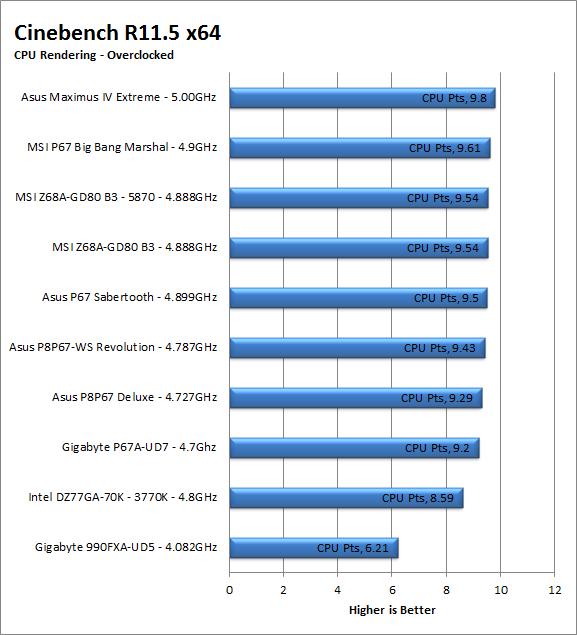
| Cinebench R11.5 OpenGL Stock | Cinebench R11.5 OpenGL Overclocked |
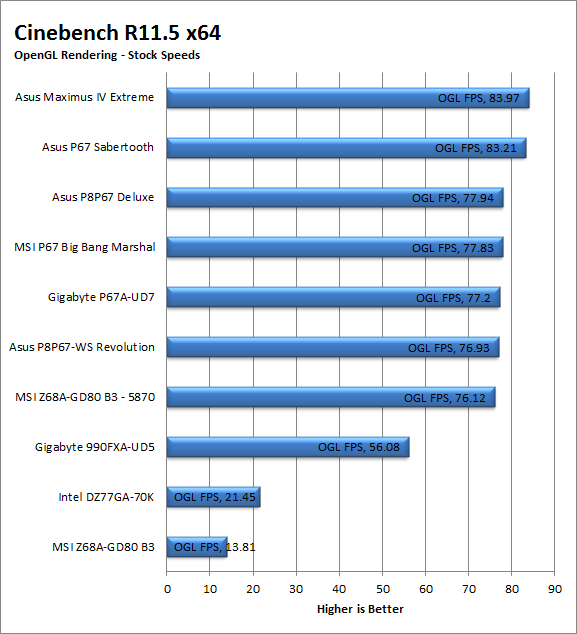 |
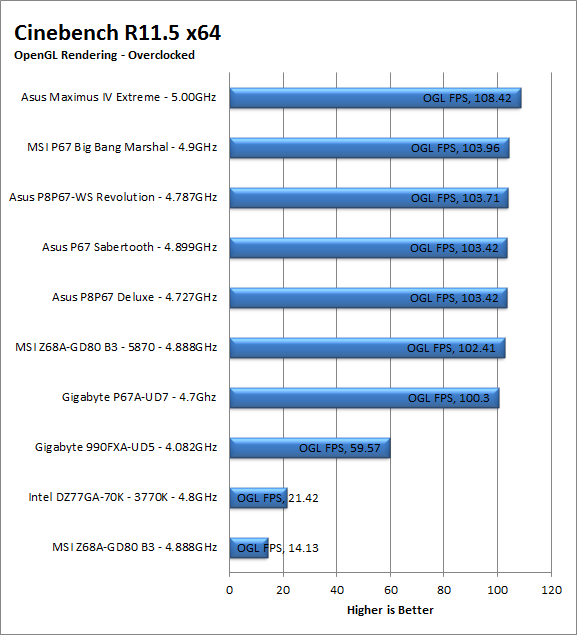 |

 Although the Intel Z77 Express chipset has been available for a while now we chose to wait until the official launch of Ivy Bridge to begin our reviews. After all the Z77 with Panther Point was designed to get the best performance when tied with Ivy Bridge so why not show that off first. To kick off our coverage of the Z77 we deiced to try out Intel’s reference design in the DZ77GA-70K. This performance desktop board from Intel is a great starting point and will give us the feel of how Intel meant things to work. So let’s get to it shall we?
Although the Intel Z77 Express chipset has been available for a while now we chose to wait until the official launch of Ivy Bridge to begin our reviews. After all the Z77 with Panther Point was designed to get the best performance when tied with Ivy Bridge so why not show that off first. To kick off our coverage of the Z77 we deiced to try out Intel’s reference design in the DZ77GA-70K. This performance desktop board from Intel is a great starting point and will give us the feel of how Intel meant things to work. So let’s get to it shall we?

